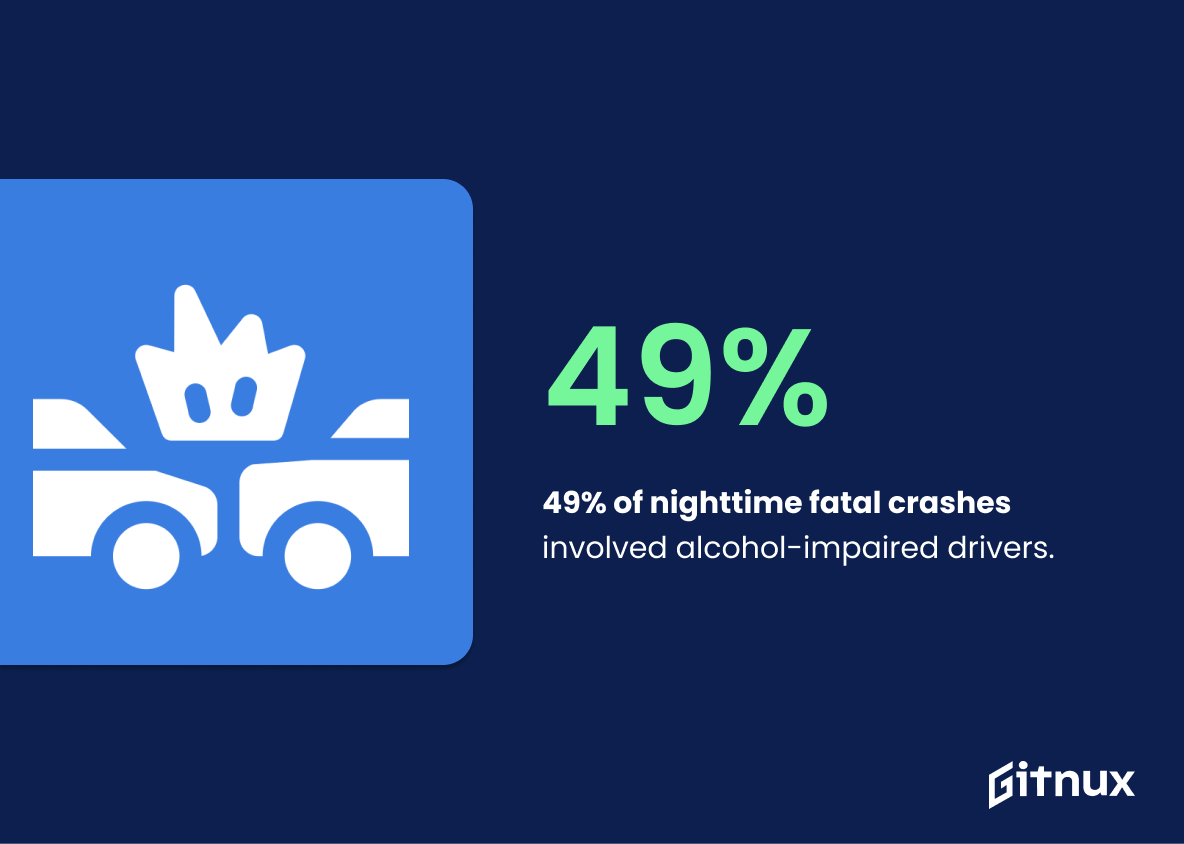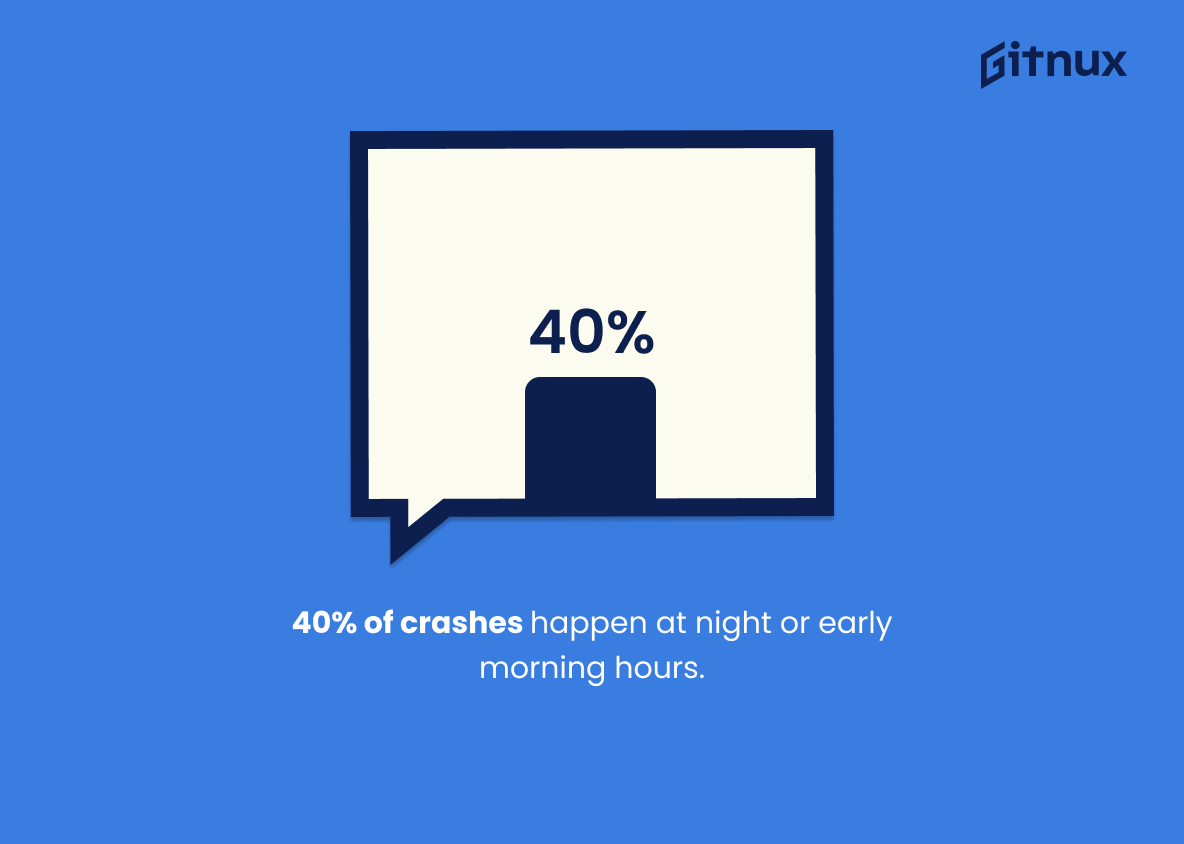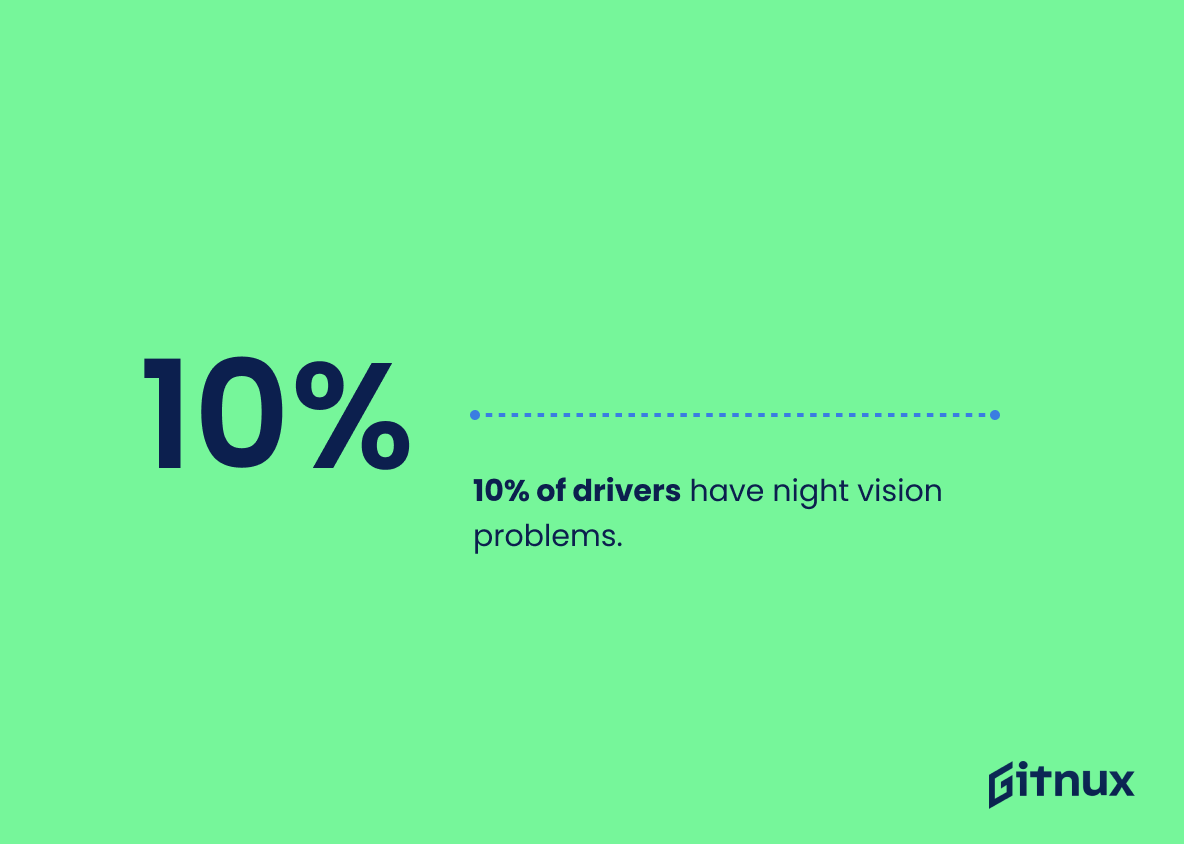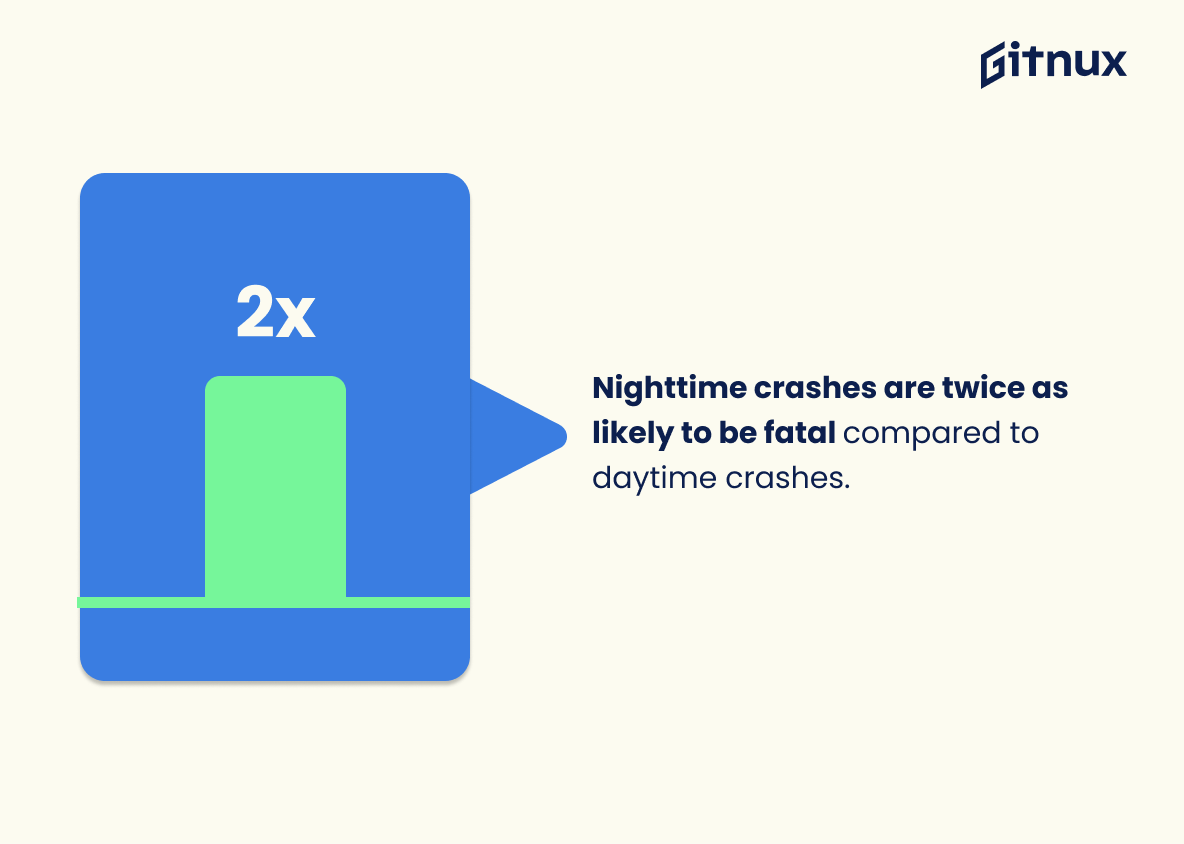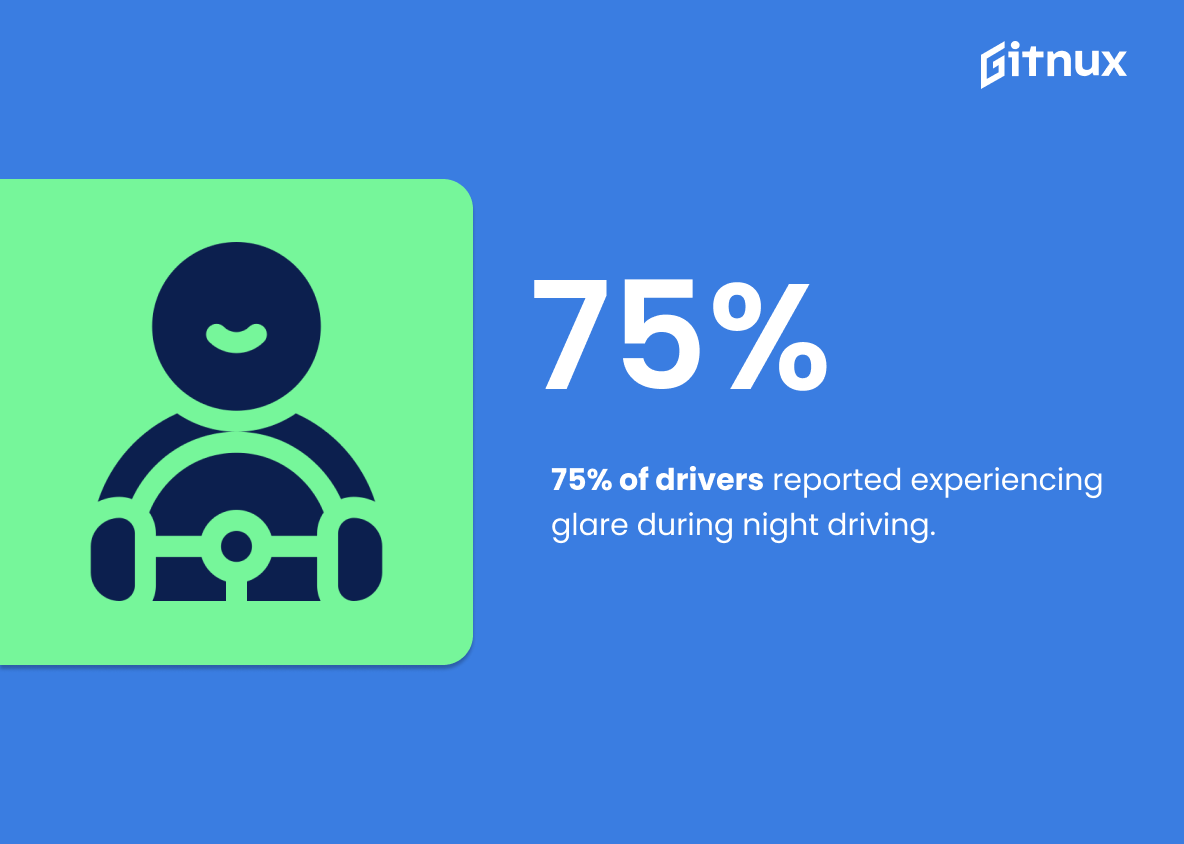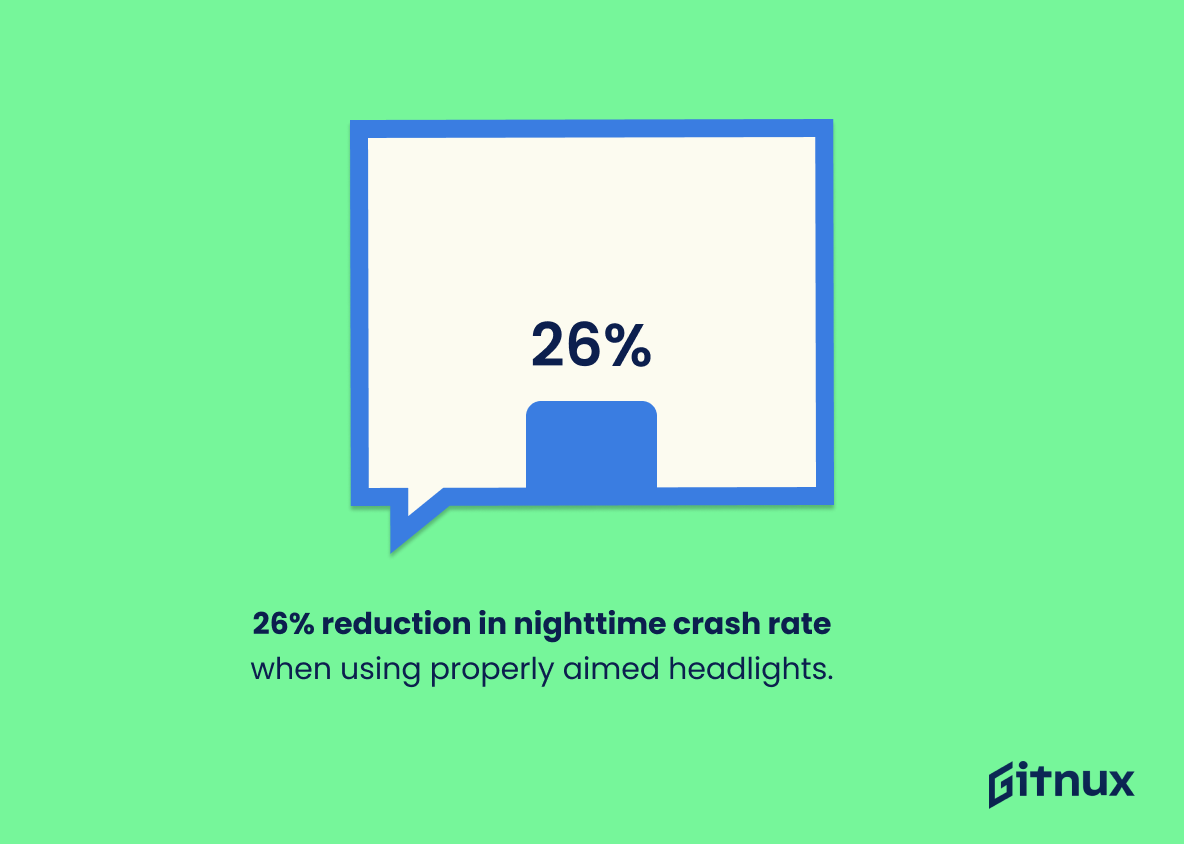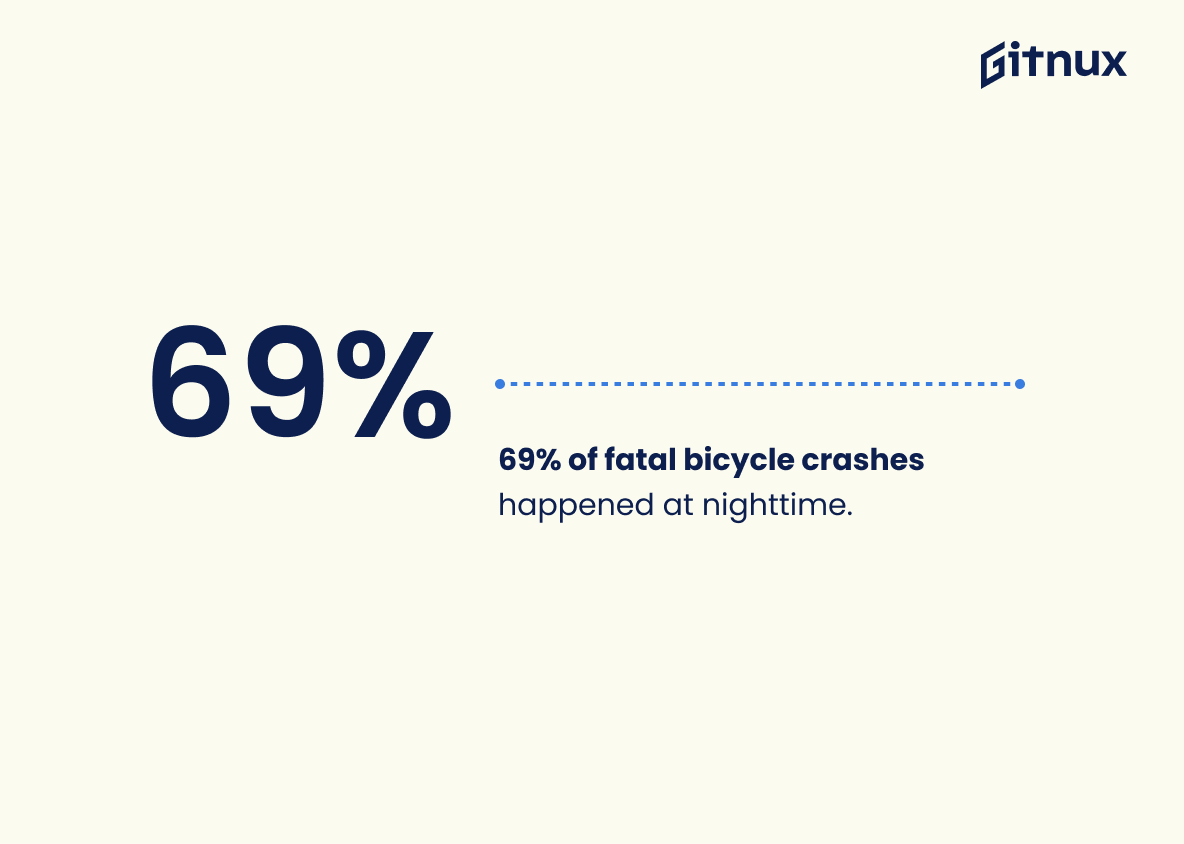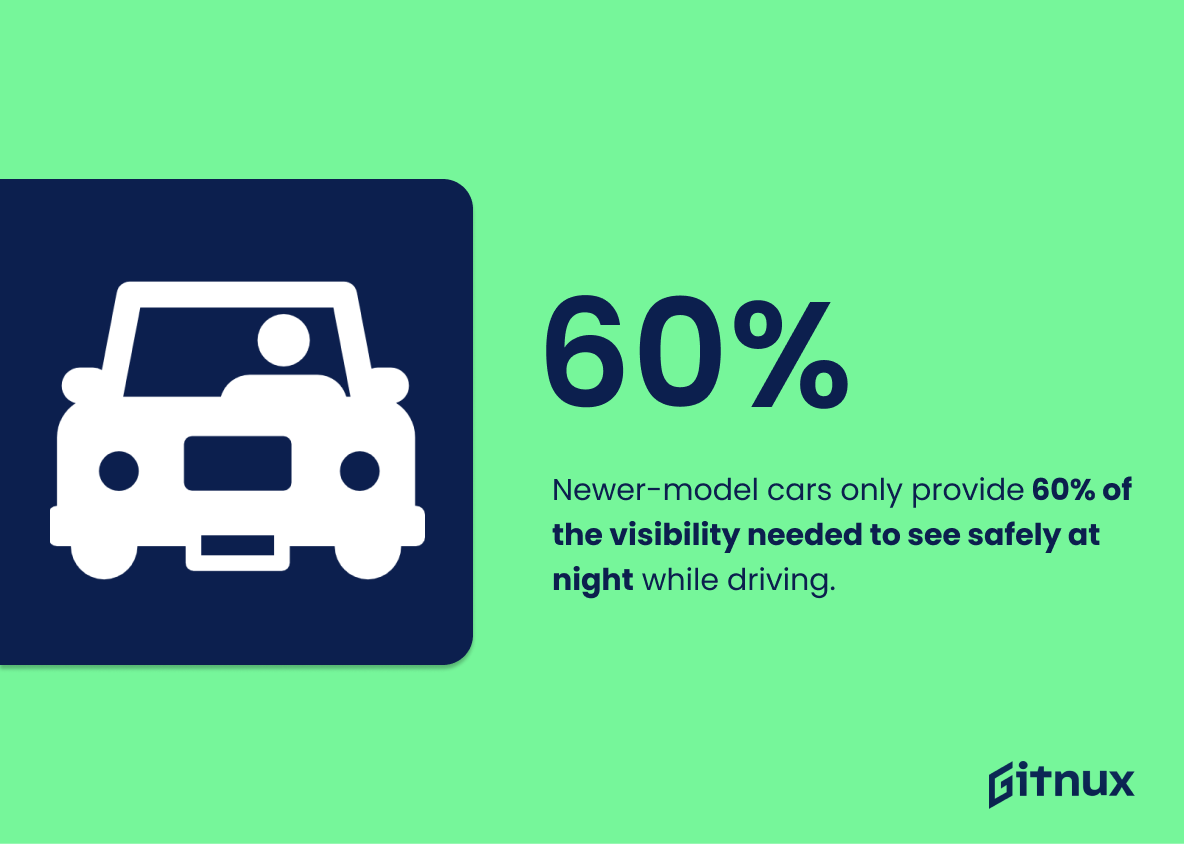Night driving is fraught with danger, with a higher likelihood of fatal crashes. The National Safety Council reveals that half of all traffic fatalities occur at night, though only a quarter of traffic is during this time. AAA Exchange points out that the fatality rate from 6 p.m. to 6 a.m. is three times the daytime rate. NHTSA’s CrashStats confirms 72% of pedestrian fatalities are in dark conditions, and their 2017 report states nearly half of fatal crashes at night involve alcohol-impaired drivers. Zero Fatalities Nevada notes that 40% of accidents happen at night or early morning.
A New York Times article reports 10% of drivers struggle with poor night vision. This figure rises for those with special night-driving glasses, with an Alcon survey revealing 27% of AAA California/Nevada members use them regularly. Moreover, 60% feel less confident driving after dark, a sentiment echoed by 62% in a Triple A Policy Research Center survey who reported difficulty discerning objects under low light conditions. This issue is particularly prevalent with 75% experiencing glare from other car headlights, according to MyAlcon research.
IIHS studies show a 26% decrease in crashes with properly aimed headlights, and an alarming 69% of cyclist fatalities occur between dusk and dawn. Motorcycle-related incidents overnight increase by 70%, and 90% of driver reactions depend on sight, as reported by The Washington Post. The end of Daylight Saving Time results in a 75% decrease in ambient light, as per NHTSAs Fatigue Rising infographic, making night driving even tougher. Notably, even with modern technology, cars only provide 60% of the visibility needed to meet safety standards.
Night Driving Statistics Overview
49% of nighttime fatal crashes involved alcohol-impaired drivers.
This statistic is a stark reminder of the dangers of night driving, particularly when alcohol is involved. It highlights the importance of being aware of the risks associated with driving at night, and the need to take extra precautions to ensure safety. It also serves as a warning to those who may be tempted to drive while under the influence of alcohol, as the consequences can be deadly.
40% of crashes happen at night or early morning hours.
This statistic is a stark reminder of the dangers of night driving. It highlights the importance of taking extra precautions when driving at night or in the early morning hours, as the risk of being involved in a crash is significantly higher than during the day. It serves as a warning to drivers to be extra vigilant and to take all necessary safety measures when driving at night.
10% of drivers have night vision problems.
This statistic is a stark reminder of the importance of being aware of the risks associated with night driving. It highlights the need for drivers to take extra precautions when driving in the dark, such as ensuring they have adequate lighting and visibility, and being aware of potential hazards. It also serves as a warning to those who may be unaware of the dangers of night driving, and encourages them to take the necessary steps to ensure their safety.
Nighttime crashes are twice as likely to be fatal compared to daytime crashes.
This statistic is a stark reminder of the dangers of night driving, highlighting the fact that nighttime crashes are twice as likely to be fatal compared to daytime crashes. It serves as a warning to drivers to be extra cautious when driving at night, as the risks are significantly higher.
62% of drivers feel less confident driving at night compared to during the day.
This statistic is a telling indication of the dangers of night driving. It highlights the fact that the majority of drivers feel less secure on the roads after dark, suggesting that the risks associated with driving at night are real and should not be taken lightly. This statistic is an important reminder that extra caution should be taken when driving at night, and that drivers should be aware of the potential hazards that come with the darkness.
75% of drivers reported experiencing glare during night driving.
This statistic is a powerful indicator of the dangers of night driving. It shows that a large majority of drivers are being affected by glare, which can lead to decreased visibility and a greater risk of accidents. This statistic is a reminder of the importance of taking extra precautions when driving at night, such as wearing sunglasses and avoiding looking directly at oncoming headlights.
26% reduction in nighttime crash rate when using properly aimed headlights.
This statistic is a shining example of the importance of properly aimed headlights when driving at night. It demonstrates that taking the time to ensure headlights are properly aimed can have a significant impact on nighttime crash rates, making the roads safer for everyone.
69% of fatal bicycle crashes happened at nighttime.
This statistic is a stark reminder of the dangers of night driving, particularly for cyclists. It highlights the importance of taking extra precautions when driving at night, such as being extra vigilant and ensuring that cyclists are visible to drivers. It also serves as a warning to cyclists to be aware of their surroundings and to take extra safety measures when riding at night.
Motorcyclists are 4 times more likely to be involved in a fatal crash at night compared to daytime.
This statistic serves as a stark reminder of the dangers of night driving, particularly for motorcyclists. It highlights the importance of taking extra precautions when driving at night, such as reducing speed, increasing the distance between vehicles, and avoiding distractions. It also emphasizes the need for motorcyclists to wear protective gear and use headlights and other visibility aids to increase their visibility to other drivers.
There is a 75% reduction in ambient light when daylight saving time ends, which impacts night driving.
This statistic is a stark reminder of the importance of night driving safety. With a 75% reduction in ambient light when daylight saving time ends, it is essential for drivers to be aware of the increased risks associated with driving in the dark. This statistic serves as a reminder to drivers to take extra precautions when driving at night, such as using headlights, reducing speed, and avoiding distractions.
Newer-model cars only provide 60% of the visibility needed to see safely at night while driving.
This statistic is a stark reminder of the importance of night driving safety. With only 60% of the visibility needed to see safely, drivers are at a greater risk of being involved in an accident due to poor visibility. This statistic serves as a warning to drivers to be extra cautious when driving at night and to take extra precautions to ensure their safety.
Conclusion
Night driving is hazardous, as 50% of traffic deaths occur at night, despite night traffic making up only 25% of total traffic. Night driving’s fatality rate is triple that of the daytime, and 72% of pedestrians die in night accidents. Alcohol plays a part in 49% of fatal nighttime crashes. A significant 40% of accidents happen at night or early morning.
Night vision problems plague 10% of drivers. Over half, 62%, lack confidence driving at night, and 60% struggle to see clearly after sunset. To combat this, 27% wear glasses, though 75% still experience glare from other vehicles. Utilizing properly aimed headlights cuts nighttime crash rates by 26%, potentially reducing fatalities by 69%.
Fatal crashes involving motorcyclists at night are quadruple those in daylight. Fatigue leads to 10% of fatal nighttime crashes due to blinding headlights causing up to 6 seconds of temporary blindness. Unfortunately, modern cars provide only 60% of required visibility, and the end of daylight saving time plunges ambient light by 75%. Extra precautions are crucial for night driving to ensure road safety.
References
0. – https://www.injuryprevention.bmj.com
1. – https://www.cdn.shopify.com
2. – https://www.zerofatalitiesnv.com
3. – https://www.crashstats.nhtsa.dot.gov
4. – https://www.iihs.org
5. – https://www.fars.nhtsa.dot.gov
6. – https://www.nytimes.com
7. – https://www.myalcon.com
8. – https://www.nsc.org
9. – https://www.nhtsa.gov
